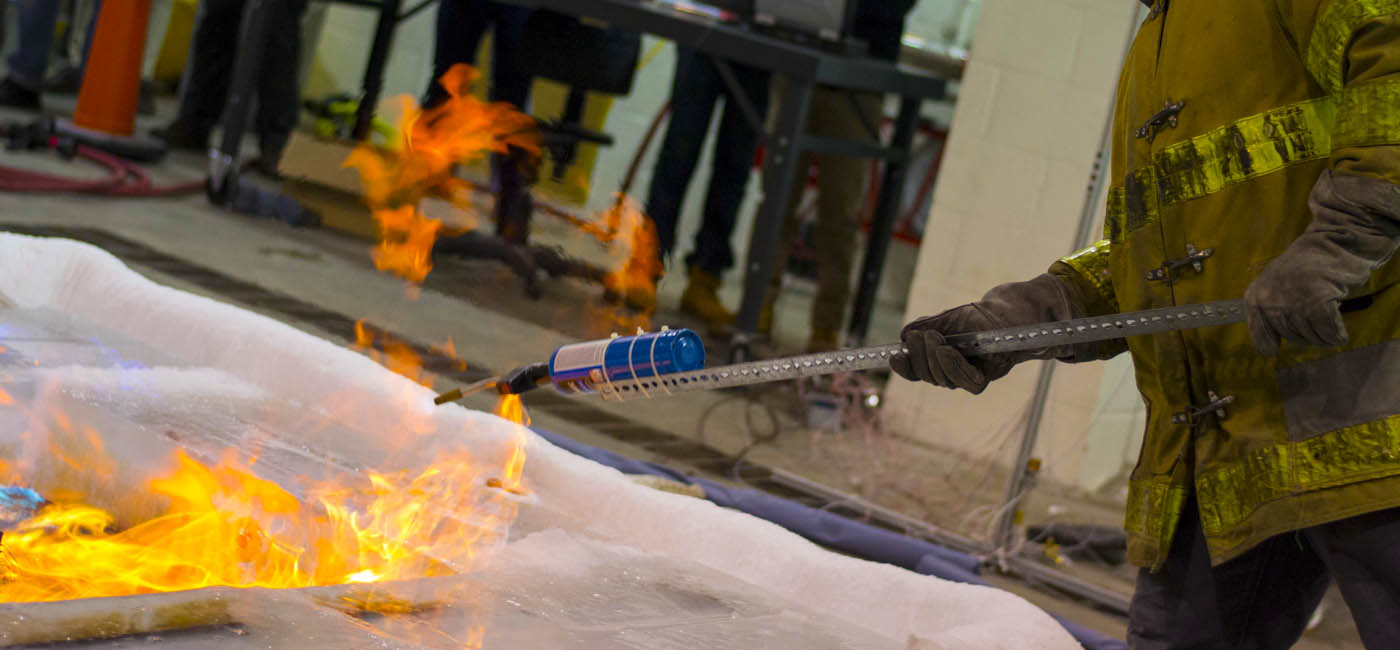On Sept. 11, 2001, as the crippled towers of the World Trade Center spewed fire and smoke into a clear sky, firefighters faced a nightmare scenario: Could they evacuate thousands of workers from offices hundreds of feet above the streets of lower Manhattan while simultaneously attacking raging fires and searching for victims, when a handful of stairwells provided the only route for descending workers and ascending first responders? Could they effectively manage a blaze far above the reach of aerial ladders, and after climbing tens of stories up crowded stairways?
A new study funded by a $1 million award from the U.S. Department of Homeland Security (DHS) and the Federal Emergency Management Agency (FEMA) aims to answer these and other questions stemming from the 9/11 and other disasters about the risks of fighting high-rise fires and the efficacy of existing methods for responding to these emergencies, while also evaluating new approaches to firefighting and building design that could make high-rise firefighting more effective and safer for the fire service. The study will be led jointly through a longstanding partnership between the Department of Fire Protection Engineering (FPE) at Worcester Polytechnic Institute (WPI), the Center for Public Safety Excellence (CPE), the International Association of Fire Fighters (IAFF), the National Institute of Standards and Technology (NIST), and the Urban Institute (UI).
Watch a video in which Kathy Notarianni, head of WPI's Fire Protection Engineering Department, discusses the national study of high-rise firefighting and talks about why elevators could help firefighters better tackle these challenging emergencies.
"High-rise fires are some of the most challenging and hazardous situations firefighters face," said Kathy Notarianni, professor and head of the FPE Department. "Unfortunately, fire codes provide little guidance on how to respond to fires in tall buildings, and fire and city officials have little or no quantitative data to draw on as they evaluate various deployment configurations or building code changes that could make high-rise fighting safer. This study will provide the data, the analysis and the guidance they need."
Notarianni said the study will be conducted in tall buildings in urban areas. In a series of experiments, actual working firefighters will be deployed to simulated multi-alarm high-rise fires. Crews consisting of more than 90 firefighters will provide realistic data on the time required to complete critical tasks and milestones on the fireground. Various crew sizes, fire apparatus configurations, and deployment and firefighting schemes will be evaluated. The study will also evaluate the benefits of firefighters using elevators, in addition to or instead of stairs, to reach and attack fires.
"As the 9/11 disaster made clear, moving firefighters and supplies up 10, 20, or even 30 stories is an arduous task, especially if you have to move against a stream of evacuees," Notarianni said. "If not properly managed, no one will reach the fire with enough stamina to actually fight it. Using elevators can dramatically improve response time and effectiveness, but the elevators have to be reliable and dedicated to the fire service, which is often not the case. We want to quantitatively measure the impact of employing elevators, and provide guidance that could influence codes for elevator design and placement in new high-rise construction."
The high-rise building study will build on the results of previous national studies conducted by WPI and its national partners with funding from the DHS. Earlier this year, they completed a multi-phase study looking at crew size and resource management for fire department deployment to residential structure fires. Many municipalities, facing tighter budgets and less revenue in tough fiscal times, will be using the study’s recommendations to analyze their firefighting resources and make more informed decisions. Last January, WPI co-sponsored a National Data Summit that focused on identifying and collecting data from a wide variety of sources, and organizing the data into a resource that municipalities can use to improve their response capabilities, decision making, and resource management.
"We have seen the impact of our work grow in recent years," said Notarianni. "Fire departments in large cities and metropolitan areas as well as those in smaller communities are quicker to adopt innovations and new ideas with the publication these national studies and the building confidence of this national partnership."

